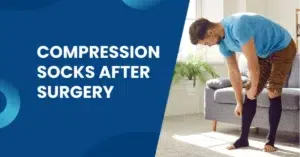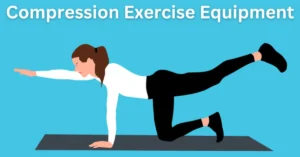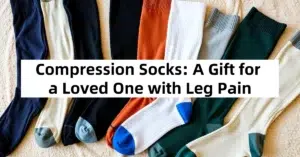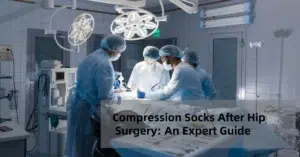Experiencing persistent edema in your lower legs and seeking effective management strategies? Look no further—compression socks may be the answer you’ve been searching for.
Don’t worry! We’ve got you covered. This article is your one-stop resource, detailing everything you need to know about edema and the proven benefits of compression socks in reducing edema.
Gone are the days when socks were only used to keep the feet warm and your skin smooth. Now, they offer much more than that. Specialized ones, such as compression socks, have many health benefits while preventing complications.
How Does Edema Affect My Life?
Edema is caused by the excess fluid trapped in the tissues of certain body parts. It signals about several medical conditions, and managing it helps you maintain a healthy life.
The trapped fluid causes affected body parts, such as feet, to increase in size. The swollen feet flatten the normal sole arch and make simple tasks, such as walking, hard and painful.
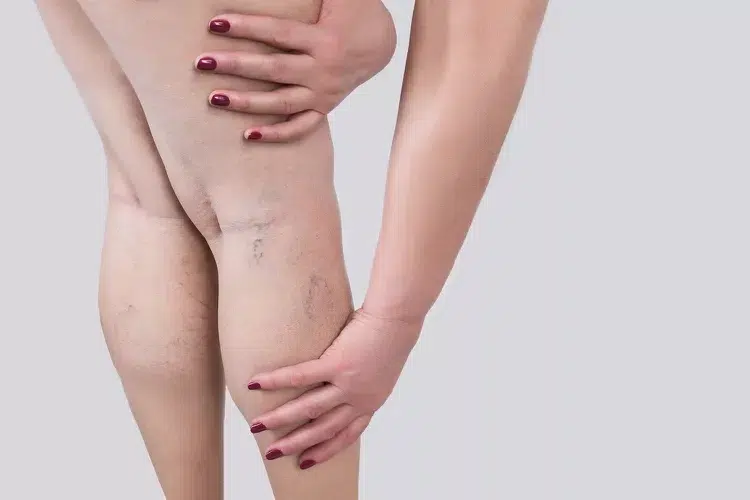
Source: https://www.verywellhealth.com/swelling-symptoms-causes-and-treatment-6892311
The untreated edema turns daily life activities into a chore. It is burdensome for both the physical and mental health of a person. Thus, treating it is mandatory to live the life of your dreams.
Edema: Its Symptoms and Causes
To understand how compression socks manage edema, we must know what it is, how it happens, and what causes it.
What is Edema?
Edema, more commonly known as swelling, results from the buildup of fluid in the body’s tissues. It can affect any part of the body, although the legs and feet are most frequently impacted. Edema can occur in people of all ages and backgrounds. However, certain populations, such as pregnant women and the elderly, are at an increased risk.
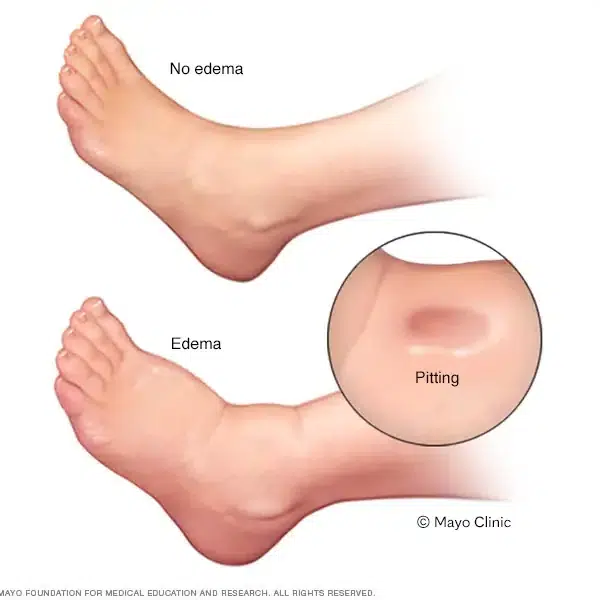
Edema in the foot and ankle
Source: https://www.mayoclinic.org/diseases-conditions/edema/symptoms-causes/syc-20366493
Symptoms
Edema presents with various symptoms, the key among them being swelling. Here’s a list to help you recognize if you have edema:
- The affected area of the body appears larger than usual.
- The skin over the swollen area may exhibit an unusual sheen and increased stretchability.
- Swelling in the lower body can make walking difficult and cause mild pain.
- There is a tightness around the affected part.
- Soreness or tenderness might be experienced in the swollen area.
Causes
So, you have discovered that you are suffering from edema, now what? You must know what caused it. The cause can be as simple as the gravitational pull, or some serious underlying condition.

TOA55 / GETTY IMAGES
Gravity
Standing or sitting in one position for a long time causes the natural gravitational pull on the body’s water. Therefore, the fluid is drawn toward the legs, making it easy to leak from the vessels into the tissues.
Venous Insufficiency
Remaining in one position for extended periods can challenge the veins’ ability to return blood to the heart, resulting in fluid pooling in the lower extremities.
Pregnancy

Credit to @Vanessa on Unsplash
Underlying Medical Conditions
Certain medical conditions such as heart failure, lymphedema, kidney, liver, and thyroid diseases can also cause edema.
Other Causes
Other edema-causing symptoms are a compromised immune system, surgical history, side effects from certain medications, and poor nutrition.
Compression Socks and Edema
Do compression socks help manage edema? The answer is definitely yes. Compression socks help alleviate swelling by applying graduated pressure, particularly around the ankles and lower legs. This targeted pressure enhances blood flow from the legs back to the heart, promoting efficient venous return. As a result, it helps prevent the accumulation of fluid in the tissues, reducing edema.
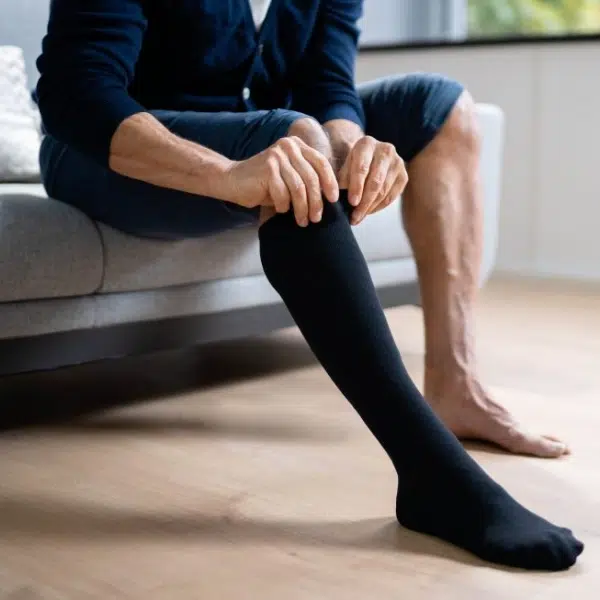
Benefits of Using Compression Socks
Compression socks provide a number of health benefits. Therefore, we gather a list of five main benefits you can get by wearing compression stockings.
1. Improved Blood Flow
Compression socks apply graduated pressure, highest at the ankle and decreasing towards the top of the leg. This design increases blood flow in areas where it may be compromised due to gravity or health conditions, ensuring efficient circulation back to the heart.
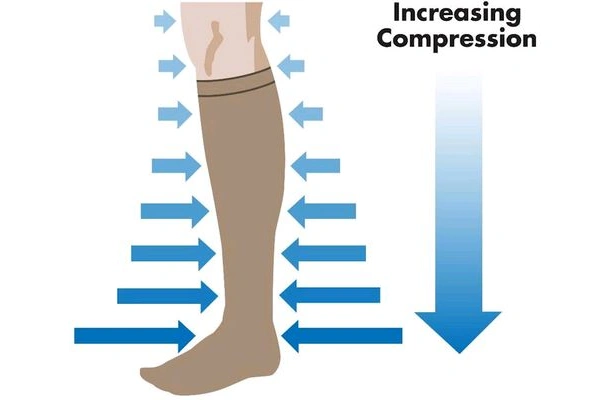
Source: Source: https://www.pebbleuk.com/article/130/do-compression-socks-work/
2. Reduce Swelling
By maintaining adequate blood circulation, the chances of fluid leak-out from the vessels decrease. The already accumulated fluid returns to the vessels to help build up the blood flow under the external pressure of compression socks. The overall work reduces the swelling in your legs and feet, relieving you from discomfort and pain.
3. Prevent Complications
Do you know that untreated and ignored edema can lead to many serious health problems? Moreover, conditions such as skin diseases, severe infections, and the formation of blood clots can arise.
The trapped fluid causes pressure on the surrounding blood vessels, thus decreasing the blood flow to the tissues. It would lead to blood clot formation within the vessels. Without adequate blood flow, there would be no proper oxygen or nutrient exchange between the blood and the tissue. The transport of immunity cells would also be compromised, leading to the spread of infections along the skin.
4. Provides Comfort
In addition to their health benefits, compression socks are designed for exceptional comfort. Opt for a breathable material to ensure you can wear them comfortably for extended periods without discomfort.

Photo by cottonbro studio | Pexels
5. Versatility
Compression socks come in a wide range of varieties. Their versatility ensures that you can find different levels of compression and comfort, with sizes, lengths, and styles to choose from. Whether you need knee-high socks or full-length stockings, you can select a compression garment that aligns with your specific requirements.
How to Choose the Right Compression Socks
With much versatility among compression socks, choosing the right one can be confusing. Here is the list of things that will help you make the correct decision.
1. Compression Strength
Compression socks are available in different strengths according to personal needs and the degree of edema. These strengths are measured in millimeters of Mercury (mmHg).

If your degree of swelling is minimal, then the mild compression of 8-15 mmHg would be best for you. However, for a severe degree of edema, the moderate strength of 15-20mmHg to firm compression of 20-30mmHg would be the appropriate pick.
It’s crucial to consult a healthcare professional to determine the appropriate compression level for your condition.
2. Proper Fit
Choose compression socks that fit snugly around your legs for optimal healing and comfort. To find the perfect fit, measure the circumference of the widest part of your calf and ankle. A well-fitted sock will provide the necessary support without restricting circulation.
3. Durability and Comfort
Compression Socks are available in different fabrics and materials, such as nylon, cotton, and polyester. Choose a breathable fabric that balances durability and comfort. High-quality materials will ensure the socks maintain their compression properties while providing comfortable wear throughout the day.
4. Types
The choice of compression socks types depends on the extent and severity of the swelling along your leg.
For mild swelling that doesn’t extend beyond the knees, knee-high socks may suffice. However, for more substantial swelling that reaches the thighs, consider thigh-high or full-length stockings to ensure proper compression and support.

Source: https://www.allheart.com/blog/which-level-of-compression-socks-do-i-need.html
How To Use Compressed Socks?
To maximize the benefits of your compression socks, consider the following instructions:
Consistently
For the best results, wear your compression socks in the daytime, particularly during extended periods of sitting or standing. However, unless you have specific medical instructions, it’s advisable to remove them when sleeping.
Correctly Application
Put on socks by first wearing the heel area, then gently roll the socks up to cover the entire leg. The compression must feel snugly but not tight. Straighten out any wrinkles or folds to ensure optimum comfort.
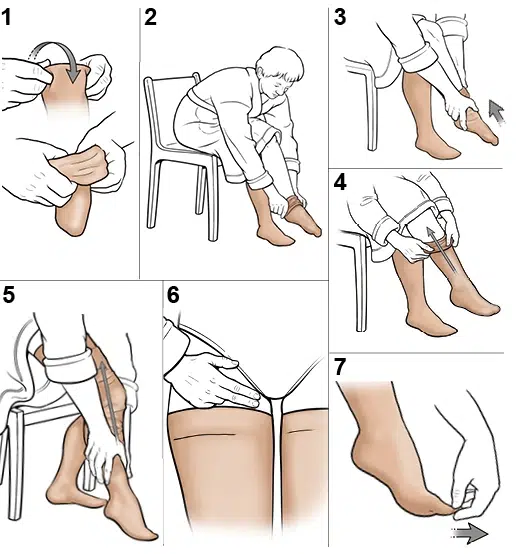
Source: https://www.saintlukeskc.org/health-library/step-step-putting-thigh-high-compression-stockings
Skin Care
Before wearing compression socks, inspect your legs for cuts, abrasions, or dry skin. Treat any skin issues appropriately, such as moisturizing dry areas, to prevent complications and ensure a proper fit.
Conclusion
Compression Socks come with a number of advantages to help you manage your edema. It decreases swelling around your legs and feet. It also supports the achy leg muscles during low-mobility activities.
By applying pressure, these specialized socks ensure blood circulation while preventing fluid build-up. Buy the one which matches your size, degree of edema, and preferred material.
Compression socks can be your first step toward a healthy lifestyle by defeating edema.
FAQs
1. Are compression socks really helpful for treating edema?
Compression socks exert external pressure on the affected parts. It helps reduce the swelling by increasing the blood flow and returning the fluid to the vessels.
2. Can I wear compression socks for the whole night?
It depends on various factors, such as the kind of skin, degree of edema, or any underlying medical conditions. It would be best to get professional advice before wearing it for the whole night.
3. Should I replace my compression socks often?
The replacement depends upon the durability of the material. But, the average time is from 3 to 6 months.
4. Are compression socks washable in the washing machine?
Compression socks can typically be washed in a washing machine, but it’s important to follow the care instructions specific to the material of your socks. Washing them in mild detergents is not harmful, and avoid using bleach for longer use.
